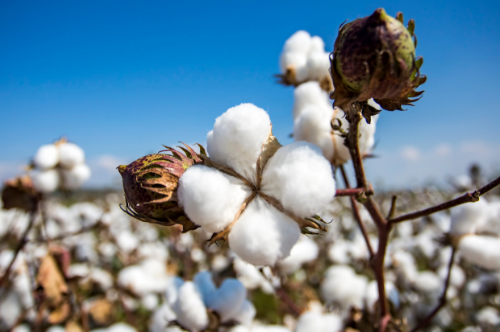There are different types of cotton that are grown around the world, all of which have been in circulation in a variety of products to improve the human condition since ancient times. Types of cotton are primarily known by their different species, grown everywhere from the USA and Central America to South America, India and Pakistan, and southern Africa and the Arabian Peninsula.
How Many Types of Cotton Are There?
Actually, there are four types of cotton grown commercially worldwide:
- Gossypium hirsutum – upland cotton, native to Central America, Mexico, the Caribbean
- Gossypium barbadense – known as extra-long staple cotton, native to tropical South America
- Gossypium arboreum – tree cotton, native to India and Pakistan
- Gossypium herbaceum – Levant cotton, native to southern Africa and the Arabian Peninsula
Gossypium Hirsutum
Most of the world’s cotton production, in fact, 90 percent of it, consists of gossypium hirsutum, commonly known as upland cotton. Upland cotton, relative to other species, is comprised of relatively short fibers. It’s widely used in a variety of consumer products where manufacturers are looking for quality and purity in an all-natural fiber.
Upland, which makes up 95 percent of the cotton grown on US soil, is used in a number of nonwoven products in the feminine hygiene and baby care categories.
Gossypium Barbadense
While the second-most produced a type of cotton, gossypium barbadense only comprises about eight percent of global cotton output. An extra-long-staple cotton, you’ll see this variety used in some of the finest fabrics in the world. Commonly known as pima, it’s very soft, quite strong, and it resists pilling, wrinkling, or fading. Pima cotton is native to tropical South America.
Widely-copied, pima cotton is coveted for its apparel and bedding applications.
Gossypium Arboretum
Comprising less than two percent of global cotton production, gossypium arboretum is the species commonly known as tree cotton. This variant is local to India and Pakistan, and you’ll see it in wide use in societies that prize the fabric muslin.
A plain weave, muslin is a gauzy fabric that offers immense breathability while maintaining its form over time. This durability can be attributed to the high tensile strength of the tree cotton fibers from which it’s made. Muslin is also used in cooking as a filter, as well as in the medical world as a gauze.
Gossypium Herbaceum
Also known as Levant cotton, gossypium herbaceum is native to southern Africa and the Arabian Peninsula. Also comprising less than two percent of the global market, Levant cotton is primarily spun into yarns to make a variety of fabrics.
In addition to its use in clothing, societies in the developing world turn to this cotton, born from a perennial shrub, for a wide range of medicinal purposes, including the treatment of nausea, headaches, fevers, hemorrhages, and diarrhea.
As you can see, cotton is a plant with near-limitless possibilities for a wide range of products. With upland cotton, we see the greatest production and application variety, with this type even used in the production of processed topsheets for nonwoven hygiene and baby care products. Whether it’s grown in the southern United States or southern Africa, cotton makes a difference in the quality of our lives worldwide, in our personal care, our clothing, bedding, upholstery, and much, much more.
